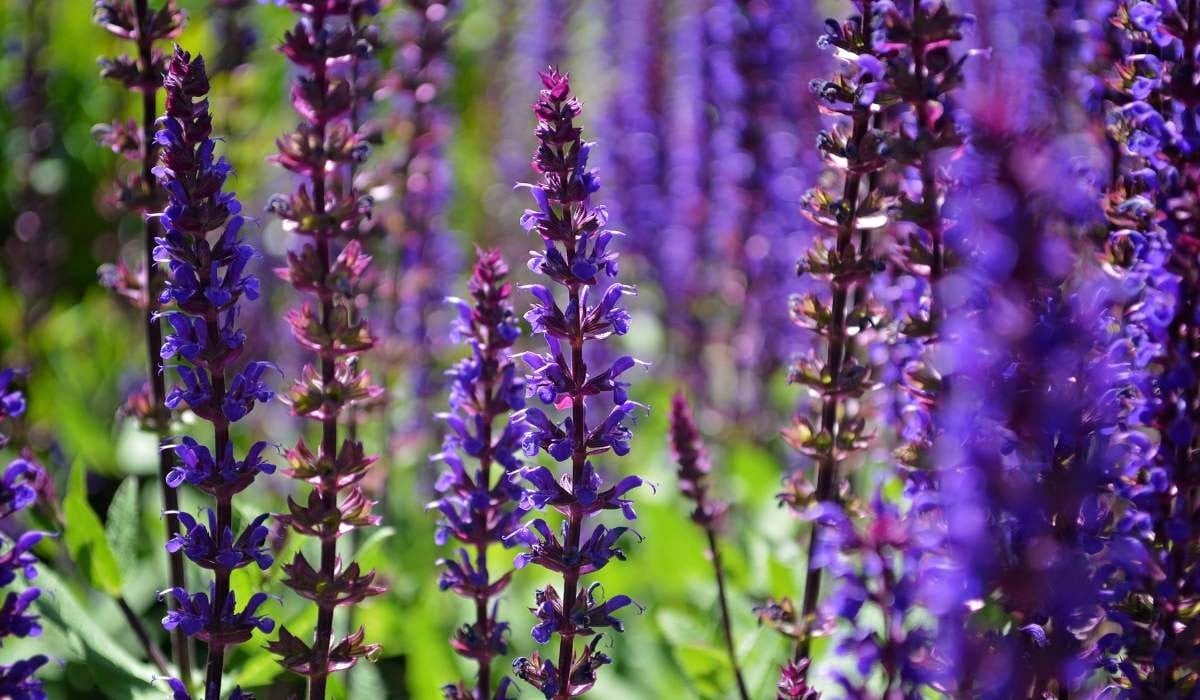Table of Contents
Looking for a suitable summer flower for your garden? Salvias can be a great option to try. The bright, vibrant flowers have a good heat tolerance and bloom from late spring to fall.
Also, pollinators cannot resist these beautiful flowers, so plenty of bees, butterflies, and hummingbirds are coming to your gardens. Salvias are also deer-resistant, so you do not need extra precautions to save the plants. Also, you can find various types of salvia in potssuitable for summer gardens and patio decorations.
This blog will discuss Salvia and its ideal types for summer gardens. We will also learn how to plant, grow, and care for salvia during summer. So, without wasting any time, let’s begin.
About Salvia
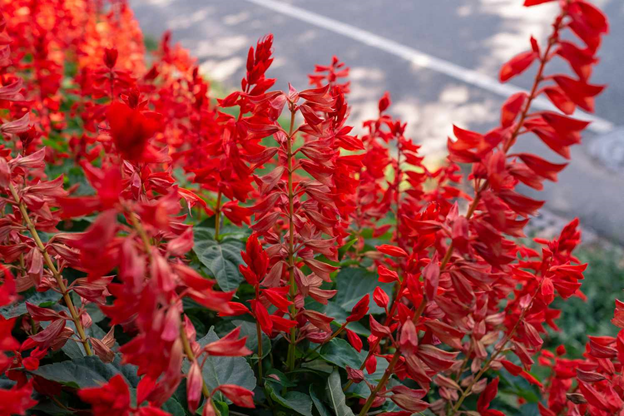
Salvia is also known as garden sage. The botanical name of salvia is salvia spp. It is a flowering plant (mainly used as ornamental) from the mint family. Salvia comes in many beautiful colors, like blue, red, pink, white, purple, and yellow. It needs full sun to bloom shiny, gorgeous Salvia flower heads. Salvia plants produce velvety green leaves with flower sticks clustered with colorful Salvia blossoms.
The blossoms are tubular and best known for attracting bees and butterflies. People use the terms ‘Salvia’ and ‘Sage’ interchangeably. Still in common knowledge, sage is referred to as an edible herb, while salvia is an ornamental flowering plant. Also, salvias are deer and rabbit-resistant, and the pungent smell of the leaves works as a natural garden pest repellent.
How to Plant Salvia?
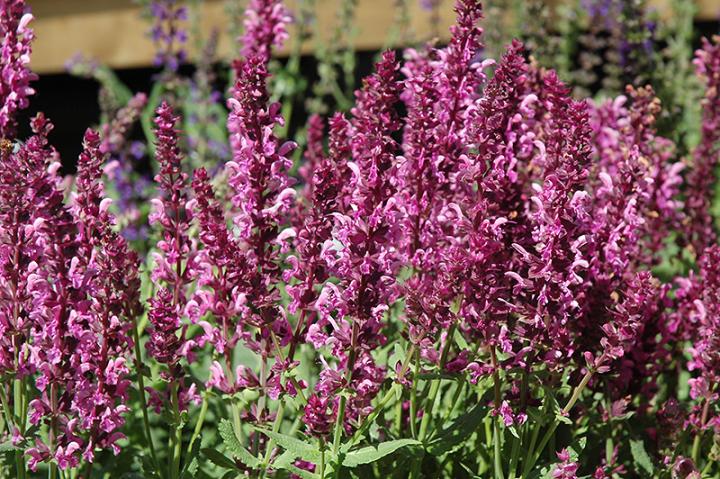
Salvias are easy to plant and grow. You can use cuttings or seeds to grow your salvia. Here are the details on how you can plant salvia for your home garden-
- Dig the soil and loosen the tightness (up to 12 inches). Remove all stones, rocks, and roots from the soil. Then, to add some nutrients to the soil, add a 3-inch layer of compost.
- You can also plant salvia in pots or buy potted salvia. Mix some grit with your pot compost to ensure good drainage. Also, feed your salvia plant in spring. Remember, if you plant them in soil, they will not need any feeding.
- Place the plants 1-3 inch difference to avoid troubles of overcrowding.
- Pour solid soil around the plant root to support the plant.
- Also, thoroughly water your plant, especially after planting.
When Does the Salvia Bloom?
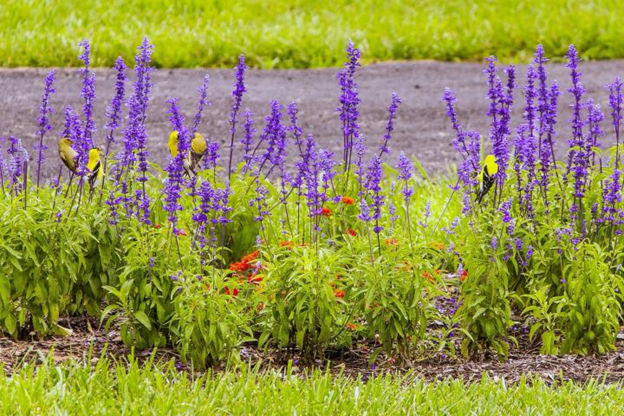
Are you wondering if salvia will bloom all through the summer? Then your answer is yes, they will. Salvia usually begins to bloom in spring, producing beautiful and eye-catching blossoms until fall. The plant blooms for 4-5 months, which includes season – spring, summer and fall. In colder regions, salvia works as an annual plant. However, the plant works as perennials for warmer regions that bloom yearly from spring to fall.
Summer Salvia Types
As we have already discussed, salvia comes in various types; approximately 900 varieties of salvia are available worldwide. Among them, many are ideal for cultivating in summer/warmer regions. Below, we will list some salvia types that are ideal for summer gardens-
1. Salvia ‘Mystic Spires’
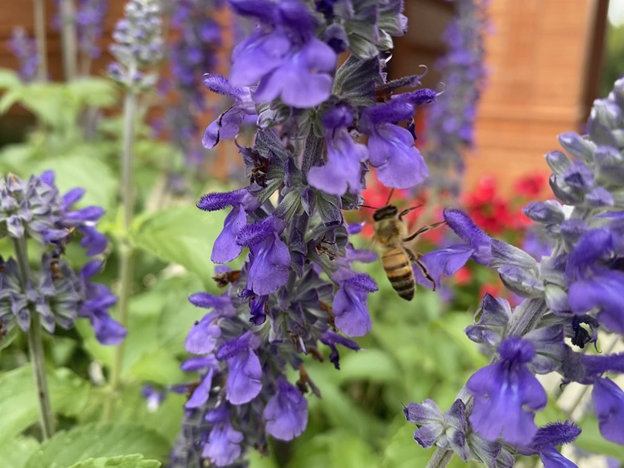
- Ideal zone- 7-12
- Sun type -Full sun
- Blooms – Summer to fall
The ‘Mystic Spires’ salvias produce deep purple blossoms with large, velvety green foliage. It is one of the long-blooming salvias that requires full sun and good watering to grow well. You can pair the mystic spires salvia with Bergartten’s sage for a classic look.
2. Salvia Amistad and Amante
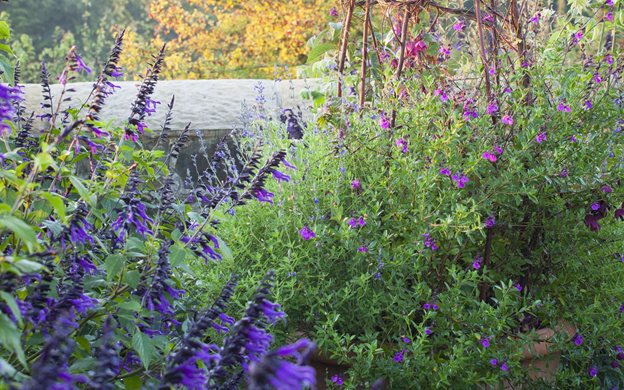
- Ideal zone- 8-11
- Sun type- Full sun
- Blooms – spring, summer and fall
Salvia Amistad and Amante are both cousins of giant salvia plants. Amante produces magenta blossoms and Amistad deep purple blossoms. They are covered with beautiful blossoms that bloom from late spring to fall. They look great in combination, but you can plant any spice in your garden.
3. Salvia Argentea or Silver Sage

- Ideal zone- 5-9
- Sun type- full
- Blooms – Spring through fall
Salvia argentea or Silver sage are short-lived perennials lasting up to 5 -6 years. The white candelabra flowers with oversized, textured, and downy leaves look aesthetically pleasing. The plant looks an absolute fit for bog, summer, and Patio gardens.
4. Salvia Patens ‘Patio’ Deep Blue or Gentian Sage
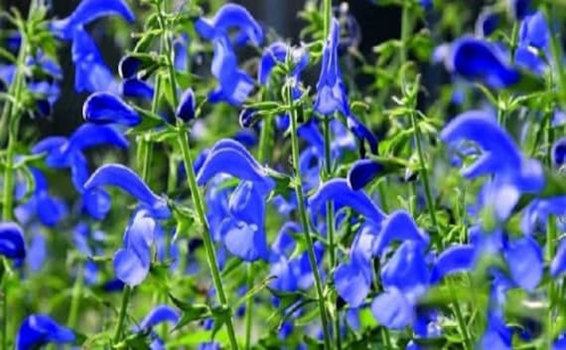
- Ideal zone – 8-11
- Sun type – Partial shade
- Blooms – late summer to fall
The salvia patens’patio’s deep blue plants produce true blue flowers that look stunning in a sunny summer. The pants bloom in late summer and continue until September (sometimes October). The plants do well in partial shade, making them a perfect fit for outdoor patio and balcony gardens. Mix them with white spices or other white flowers for a beautiful contrast in your garden.
Tips to Care for Your Salvias
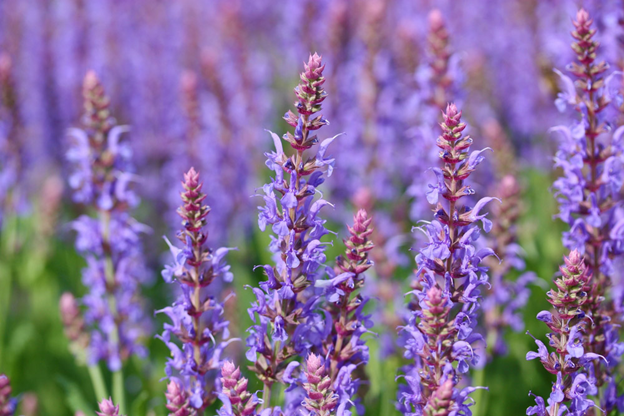
Caring for your salvias is essential to grow beautiful and healthy garden salvias. Here are a few tips to take care of them-
- Add a layer of mulch every spring to retain moisture and prevent weeds.
- Deadhead throughout the blooming season for continuous blooming.
- Water adequately.
- Leave the last blooms for reseeding.
- Divide perennials every year in spring.
- Feed your salvia in pots during spring.
- Prune them down 1-2 inches after the killing frost.
Wrapping Up
Salvias can grow during the summer season, and some of its long-blooming species can bloom from spring through late fall, making them ideal for summer gardens. Most salvia plants like full sun and have a high heat tolerance. They are also deer and rabbit-resistant, and the pungent odder helps to keep the garden pests away.
Also, salvia comes in various beautiful colors, including red, purple, blue, yellow, and white, that look stunning in garden spaces. So, what are you waiting for?
Get some quality salvia seeds and begin your summer gardening. You can also purchase salvia in pots for your outdoor Patio gardens.

